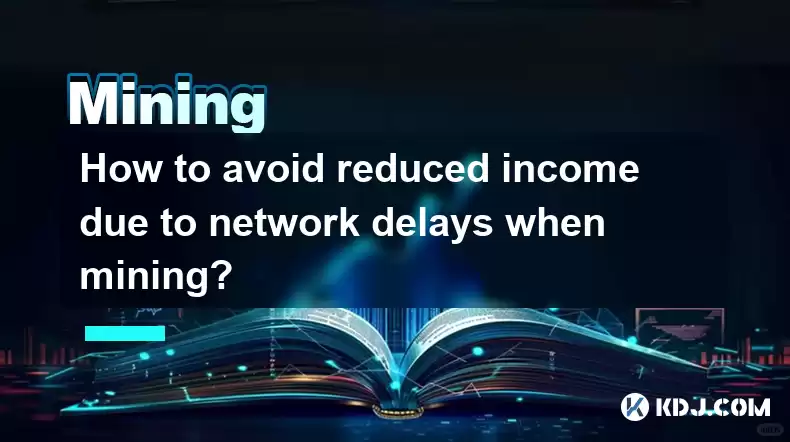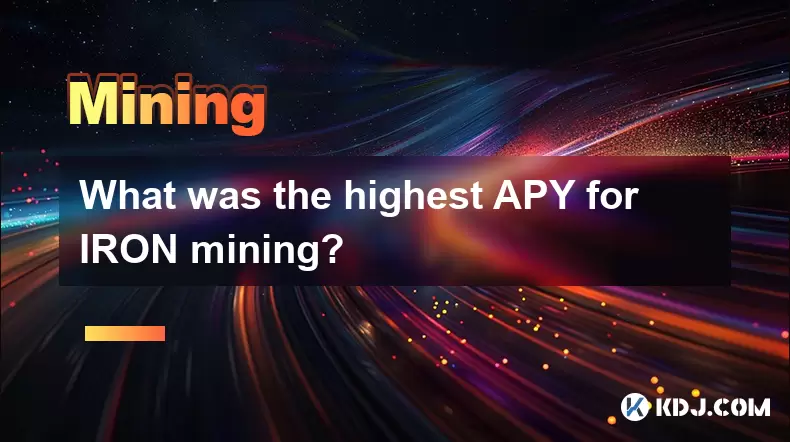-
 Bitcoin
Bitcoin $114400
0.68% -
 Ethereum
Ethereum $3550
2.48% -
 XRP
XRP $3.001
4.99% -
 Tether USDt
Tether USDt $0.9999
0.01% -
 BNB
BNB $757.6
1.46% -
 Solana
Solana $162.9
1.07% -
 USDC
USDC $0.9998
0.00% -
 TRON
TRON $0.3294
0.91% -
 Dogecoin
Dogecoin $0.2015
2.46% -
 Cardano
Cardano $0.7379
2.01% -
 Stellar
Stellar $0.4141
8.83% -
 Hyperliquid
Hyperliquid $37.83
-1.91% -
 Sui
Sui $3.454
0.76% -
 Chainlink
Chainlink $16.62
3.53% -
 Bitcoin Cash
Bitcoin Cash $554.6
2.84% -
 Hedera
Hedera $0.2486
3.91% -
 Ethena USDe
Ethena USDe $1.001
0.00% -
 Avalanche
Avalanche $21.95
3.34% -
 Toncoin
Toncoin $3.563
-2.85% -
 Litecoin
Litecoin $112.7
2.65% -
 UNUS SED LEO
UNUS SED LEO $8.977
0.13% -
 Shiba Inu
Shiba Inu $0.00001232
1.85% -
 Uniswap
Uniswap $9.319
2.93% -
 Polkadot
Polkadot $3.632
1.38% -
 Monero
Monero $307.2
2.36% -
 Dai
Dai $0.9997
-0.03% -
 Bitget Token
Bitget Token $4.340
0.91% -
 Pepe
Pepe $0.00001048
1.07% -
 Cronos
Cronos $0.1348
3.26% -
 Aave
Aave $261.5
1.93%
How to avoid reduced income due to network delays when mining?
To mitigate network delays in crypto mining, optimize your internet, join a reliable mining pool, use advanced software, and leverage dedicated hardware and blockchain features.
Apr 19, 2025 at 12:14 am

Mining cryptocurrencies can be a lucrative endeavor, but it comes with its own set of challenges, one of which is network delays. These delays can significantly impact your mining income by causing you to miss out on block rewards and transaction fees. In this article, we will explore various strategies to mitigate the effects of network delays and ensure that your mining operations remain profitable.
Understanding Network Delays in Mining
Network delays in the context of cryptocurrency mining refer to the time it takes for your mined blocks or transactions to propagate across the network. These delays can occur due to various factors such as internet connectivity issues, high network congestion, or even the geographical distance between nodes. When a miner successfully mines a block, it needs to be broadcast to the network quickly to be accepted and added to the blockchain. If there is a delay, another miner might find a block in the meantime, causing your block to be orphaned and resulting in lost income.
Optimizing Your Internet Connection
To minimize network delays, the first step is to ensure that your internet connection is as fast and reliable as possible. Here are some steps you can take to optimize your internet connection:
- Upgrade your internet plan: If you are on a slow internet plan, consider upgrading to a higher speed plan that can handle the data demands of mining.
- Use a wired connection: Wireless connections can be less stable and slower than wired connections. Use an Ethernet cable to connect your mining rig directly to your router.
- Reduce network congestion: Ensure that your network is not being bogged down by other devices or applications. Prioritize your mining rig's internet usage by limiting bandwidth-intensive activities on other devices.
- Choose a reliable ISP: Select an Internet Service Provider (ISP) known for its reliability and low latency. This can make a significant difference in how quickly your mined blocks are propagated.
Selecting the Right Mining Pool
Joining a mining pool can help mitigate the impact of network delays. Mining pools aggregate the computational power of multiple miners, increasing the chances of finding a block and sharing the rewards among participants. Here are some tips for selecting the right mining pool:
- Choose a pool with a good track record: Look for pools that have a history of reliable payouts and low orphan rates. This indicates that the pool has effective strategies in place to minimize the impact of network delays.
- Consider pool size: Larger pools tend to find blocks more frequently, which can help reduce the impact of network delays. However, they also come with smaller individual rewards. Find a balance that works for your mining setup.
- Check pool location: The geographical location of the mining pool can affect latency. Choose a pool that is closer to your physical location to minimize network delays.
Implementing Advanced Mining Software
Using advanced mining software can also help you manage network delays more effectively. Some software solutions offer features specifically designed to optimize block propagation and reduce the risk of orphaned blocks. Here are some steps to implement advanced mining software:
- Research and select software: Look for mining software that has features like block propagation optimization, low-latency connections, and real-time monitoring. Examples include CGMiner, EasyMiner, and BFGMiner.
- Configure the software: Once you have selected your software, configure it to prioritize block propagation. This might involve setting up specific network settings or enabling features that focus on reducing latency.
- Monitor performance: Use the software's monitoring tools to keep an eye on your mining performance and network latency. Adjust settings as needed to optimize your setup.
Using Dedicated Mining Hardware
Dedicated mining hardware, such as ASICs (Application-Specific Integrated Circuits), can also help reduce the impact of network delays. These devices are designed specifically for mining and often come with built-in features to optimize performance and reduce latency. Here are some considerations when using dedicated mining hardware:
- Select the right hardware: Choose ASICs that are known for their efficiency and low latency. Research different models and read reviews to find the best option for your needs.
- Proper setup and maintenance: Ensure that your hardware is set up correctly and maintained regularly. Overheating or other hardware issues can cause delays in mining operations.
- Optimize cooling: Efficient cooling systems can help maintain the performance of your mining hardware, reducing the risk of delays caused by overheating.
Leveraging Blockchain Technology Features
Some blockchain networks have built-in features designed to mitigate the impact of network delays. For example, Bitcoin's Compact Block Relay and FIBRE (Fast Internet Bitcoin Relay Engine) are technologies that help speed up block propagation. Here's how you can leverage these features:
- Stay updated with network upgrades: Keep your mining software and hardware updated to take advantage of the latest blockchain technologies designed to reduce network delays.
- Configure your mining setup: Ensure that your mining setup is configured to use these technologies. This might involve enabling specific settings in your mining software or choosing a mining pool that supports these features.
Monitoring and Analyzing Network Performance
Regular monitoring and analysis of your network performance can help you identify and address issues that might be causing delays. Here are some steps to effectively monitor and analyze your network performance:
- Use network monitoring tools: Tools like PingPlotter, Wireshark, or even built-in features in your mining software can help you track network latency and identify potential issues.
- Analyze data regularly: Set aside time to review your network performance data. Look for patterns or recurring issues that might be causing delays.
- Adjust your setup as needed: Based on your analysis, make adjustments to your internet connection, mining software, or hardware to optimize performance and reduce delays.
Frequently Asked Questions
Q: Can using a VPN help reduce network delays in mining?
A: Using a VPN can sometimes help by routing your internet traffic through a more stable or faster connection. However, it can also introduce additional latency, so it's important to test and see if it improves your specific situation.
Q: How does the size of a blockchain affect network delays?
A: Larger blockchains can take longer to propagate across the network, potentially increasing the risk of network delays. However, many modern blockchains have implemented technologies to mitigate this issue.
Q: Are there any specific cryptocurrencies that are more susceptible to network delays?
A: Cryptocurrencies with larger block sizes or higher transaction volumes, such as Bitcoin and Ethereum, can be more susceptible to network delays. However, the impact can vary based on the specific network and mining setup.
Q: Can mining from multiple locations help reduce the impact of network delays?
A: Yes, mining from multiple locations can help by distributing the risk of network delays. If one location experiences connectivity issues, the others can continue to operate, potentially reducing the overall impact on your mining income.
Disclaimer:info@kdj.com
The information provided is not trading advice. kdj.com does not assume any responsibility for any investments made based on the information provided in this article. Cryptocurrencies are highly volatile and it is highly recommended that you invest with caution after thorough research!
If you believe that the content used on this website infringes your copyright, please contact us immediately (info@kdj.com) and we will delete it promptly.
- Cryptocurrency, Altcoins, and Profit Potential: Navigating the Wild West
- 2025-08-04 14:50:11
- Blue Gold & Crypto: Investing Disruption in Precious Metals
- 2025-08-04 14:30:11
- Japan, Metaplanet, and Bitcoin Acquisition: A New Era of Corporate Treasury?
- 2025-08-04 14:30:11
- Coinbase's Buy Rating & Bitcoin's Bold Future: A Canaccord Genuity Perspective
- 2025-08-04 14:50:11
- Coinbase's Buy Rating Maintained by Rosenblatt Securities: A Deep Dive
- 2025-08-04 14:55:11
- Cryptos, Strategic Choices, High Returns: Navigating the Meme Coin Mania
- 2025-08-04 14:55:11
Related knowledge

What was the highest APY for IRON mining?
Jul 23,2025 at 05:14am
Understanding IRON Token and Its Mining MechanismThe IRON token is a stablecoin that operates within the Iron Finance ecosystem, primarily on blockcha...

What is impermanent loss in IRON pools?
Jul 23,2025 at 09:00am
Understanding Impermanent Loss in the Context of IRON PoolsImpermanent loss is a phenomenon that affects liquidity providers in decentralized finance ...

How to claim rewards from IRON mining?
Jul 23,2025 at 02:21pm
Understanding IRON Mining and Reward MechanismsIRON Finance operated as a decentralized finance (DeFi) protocol on the Polygon and Binance Smart Chain...

How to claim rewards from IRON mining?
Jul 29,2025 at 05:07am
Understanding IRON Mining and Reward MechanismIRON is a dual-token system designed to stabilize the value of a synthetic asset through a combination o...

IRON mining tutorial for beginners
Jul 27,2025 at 12:01am
What Is IRON and How Does It Work in the Cryptocurrency Ecosystem?IRON is a cryptocurrency token that operates on the Binance Smart Chain (BSC) and is...

How to calculate APY for IRON mining?
Jul 28,2025 at 09:49am
Understanding APY in the Context of IRON Token MiningWhen engaging in IRON token mining within decentralized finance (DeFi) platforms, Annual Percenta...

What was the highest APY for IRON mining?
Jul 23,2025 at 05:14am
Understanding IRON Token and Its Mining MechanismThe IRON token is a stablecoin that operates within the Iron Finance ecosystem, primarily on blockcha...

What is impermanent loss in IRON pools?
Jul 23,2025 at 09:00am
Understanding Impermanent Loss in the Context of IRON PoolsImpermanent loss is a phenomenon that affects liquidity providers in decentralized finance ...

How to claim rewards from IRON mining?
Jul 23,2025 at 02:21pm
Understanding IRON Mining and Reward MechanismsIRON Finance operated as a decentralized finance (DeFi) protocol on the Polygon and Binance Smart Chain...

How to claim rewards from IRON mining?
Jul 29,2025 at 05:07am
Understanding IRON Mining and Reward MechanismIRON is a dual-token system designed to stabilize the value of a synthetic asset through a combination o...

IRON mining tutorial for beginners
Jul 27,2025 at 12:01am
What Is IRON and How Does It Work in the Cryptocurrency Ecosystem?IRON is a cryptocurrency token that operates on the Binance Smart Chain (BSC) and is...

How to calculate APY for IRON mining?
Jul 28,2025 at 09:49am
Understanding APY in the Context of IRON Token MiningWhen engaging in IRON token mining within decentralized finance (DeFi) platforms, Annual Percenta...
See all articles

























































































